South Korea is undoubtedly a favourite destination for many travellers! However, instead of the usual shopping and eating, why not do something different for a change on your next trip?
Take your senses for a roller coaster ride at any of these 8 lesser-known traditional markets in South Korea. Revel in the markets’ distinctive local atmosphere, heritage and warm, energetic vibes before digging into a mouth-watering array of street foods. Get your stomachs ready, you’re in for a feast!
1. Sokcho Tourist and Fishery Market, Gangwon
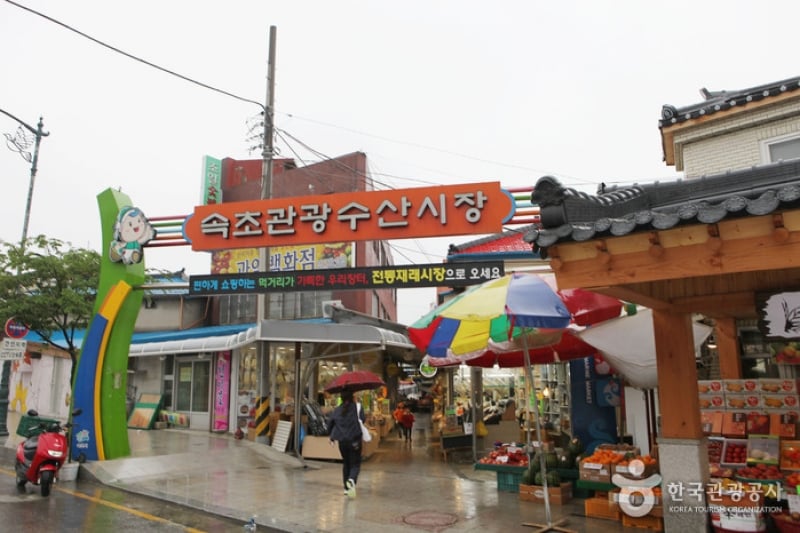
Image credit: Korea Tourism Organization
Formerly known as Jungang Market, Sokcho Tourist & Fishery Market has been a local staple since 1982. With more than 450 stalls, it’s a bustling hub where both locals and tourists can shop for fresh seafood, clothing, and household goods. The atmosphere is lively, reflecting Sokcho’s coastal identity.
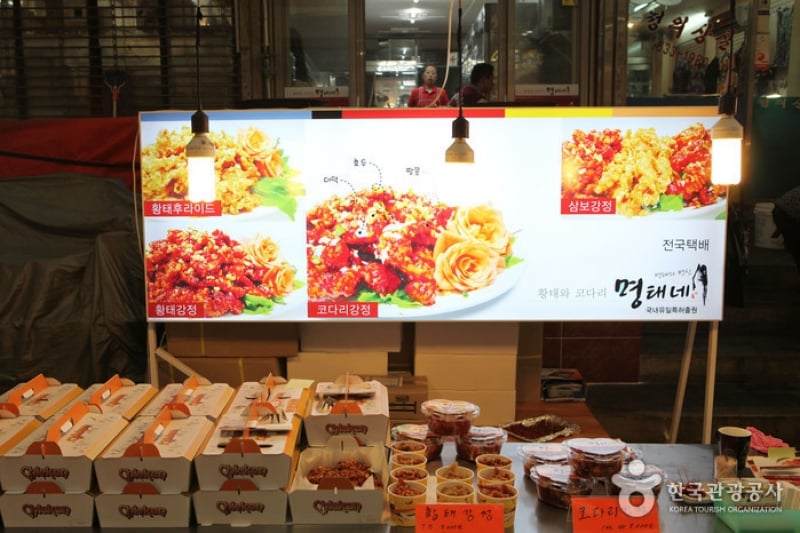
Image credit: Korea Tourism Organization
Foodies should not miss the famous Dak Gangjeong – crispy fried chicken glazed in sweet and spicy sauce, often topped with crushed peanuts. Another local specialty is Ojingeo Sundae (squid stuffed with rice and vegetables), either steamed or pan-fried in egg batter. For a sweet treat, try the market’s chewy peanut-filled Hotteok.
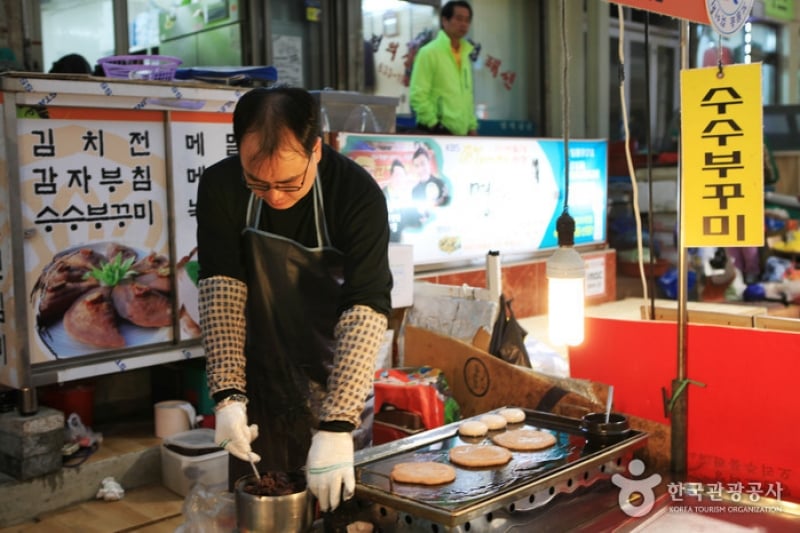
Image credit: Korea Tourism Organization
Looking for something sweet? Try the popular Hotteok, the deep-fried Korean version of mochi! Once cooked, the mochi is cut in half and stuffed with a generous amount of crushed peanuts and sugar which caramelises beautifully in the heat.
Address: 16, Jungang-ro 147beon-gil, Sokcho-si, Gangwon-do
How to get there: From Dong Seoul Bus Terminal, take a bus to Sokcho Express Bus Terminal, then transfer to a local bus (1, 1-1, 7, 7-1, 9-1, 88).
2. Jeonju Nambu Market, Jeollabuk-do
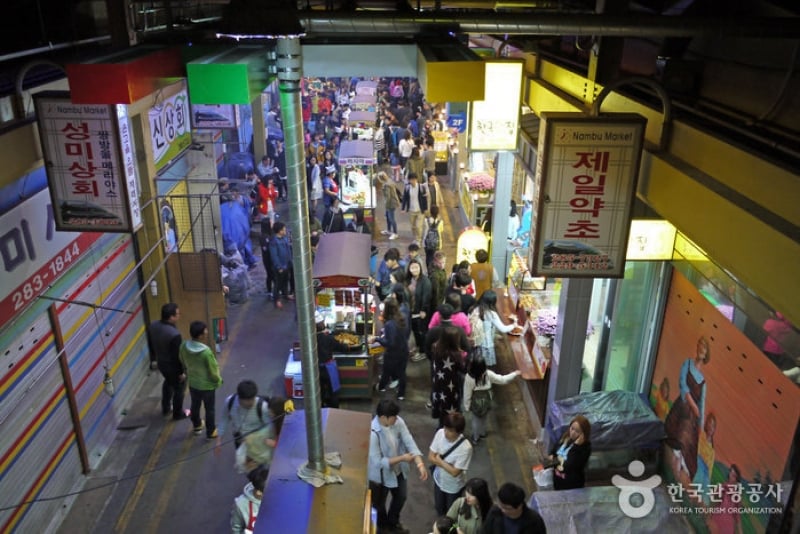
Image credit: Korea Tourism Organization
Dating back to 1905, Jeonju’s Nambu Market is the city’s oldest traditional market with over 800 stalls selling everything from produce and furniture to street snacks. Its second floor has been transformed into a trendy Youth Market, filled with cafés, boutiques, and art spaces run by young entrepreneurs.
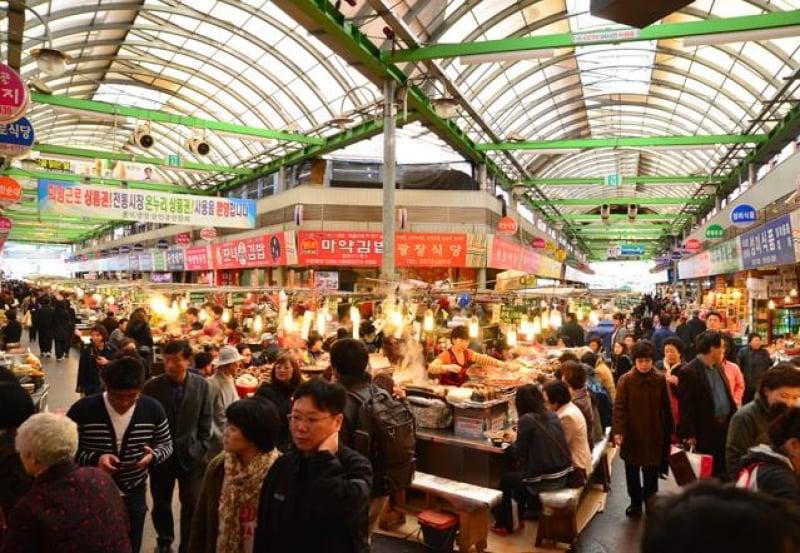
Image credit: Korea Tourism Organization, New York
Visit on a Friday or Saturday evening to experience its night market, when colourful lights, music, and crowds bring the space to life. Try Nokdujeon (mung bean pancakes) or the adventurous Soondae (blood sausage soup), both local favourites.
Address: 63, Pungnammun 2-gil, Wansan-gu, Jeonju-si, Jeollabuk-do
How to get there:Bus from Dong Seoul Bus Terminal to Jeonju, then take bus 684 or 61 to Pungnammun Gate. Trains also run from Yongsan Station to Jeonju
3. Songjeong Station 1913 Market, Gwangsan-gu
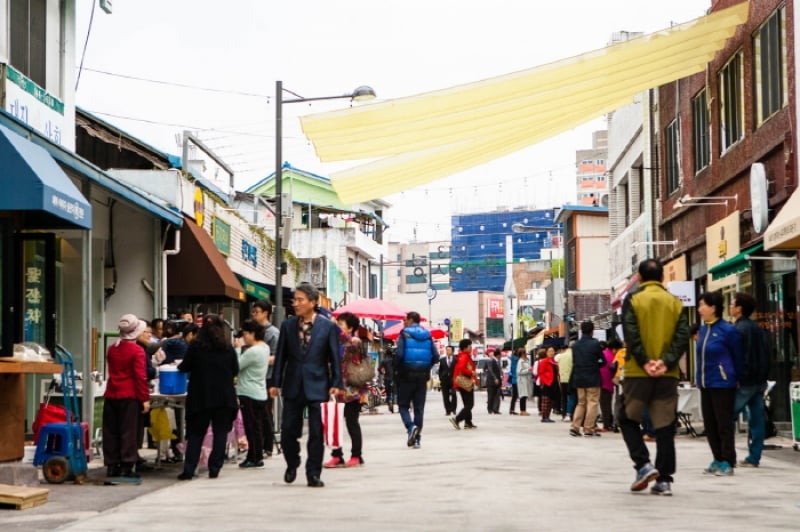
Image credit: Korea Tourism Organization
This historic market first opened in 1913 but has been revitalised into a stylish cultural hub. Each shop features a story signboard about its heritage, blending nostalgia with modern design. It’s especially popular with Gwangju’s youth for its retro vibe and Instagram-worthy setting.
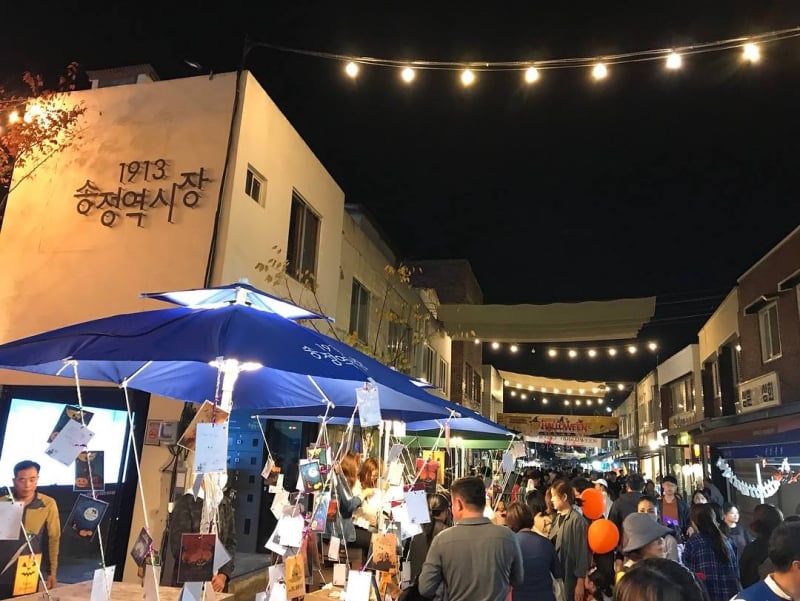
Image credit: 1913송정역시장
Signature bites here include Gyeran Bap (egg rice), juicy Tteokgalbi (beef patties), and fresh Eomuk (fish cakes). Don’t miss Ttoa Bread, stuffed with cheese, chocolate, or blueberry. The market closes on the 2nd and 4th Mondays of every month.
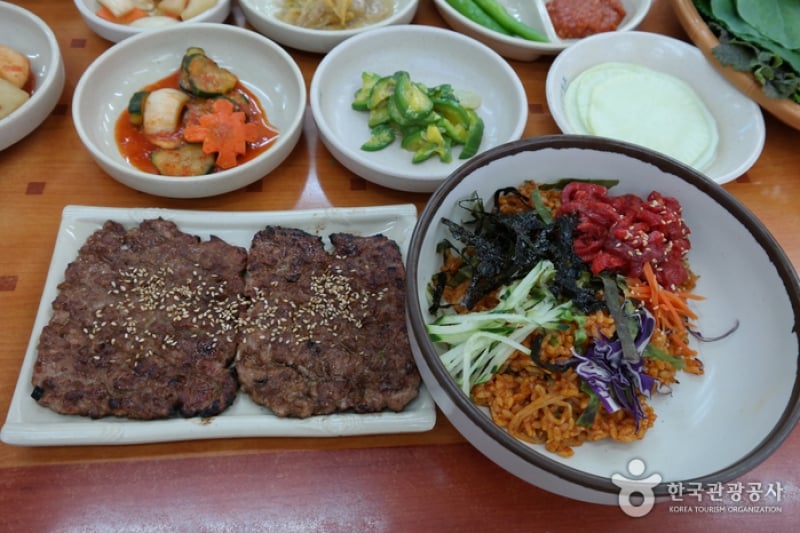
Image credit: Korea Tourism Organization
Address: 13, Songjeong-ro 8beon-gil, Gwangsan-gu, Gwangju
How to get there: Take a train from Yongsan Station to Gwangju-Songjeong Station.
4. Seogwipo Maeil Olle Market, Jeju
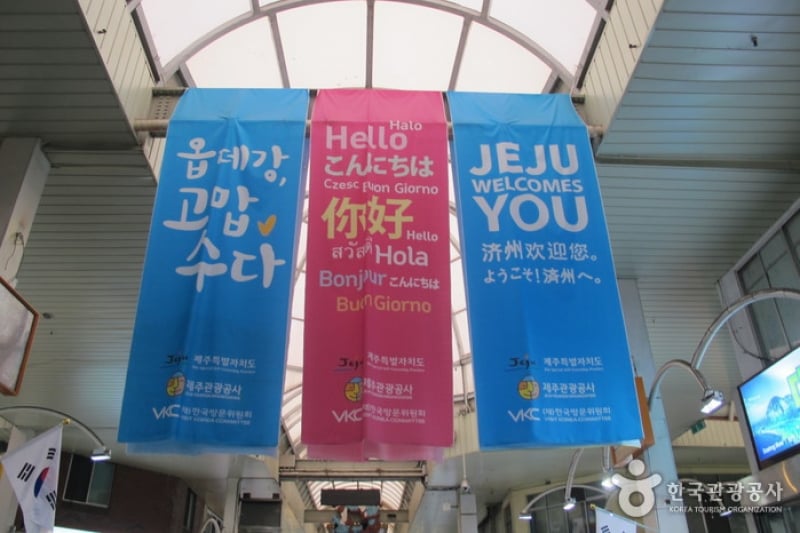
Image credit: Korea Tourism Organization
Located on Jeju Island’s southern coast, Seogwipo Maeil Olle Market has been a local fixture since the 1960s. It’s filled with fresh produce, snacks, and seafood, making it a lively place to mingle with vendors and sample authentic Jeju flavours.
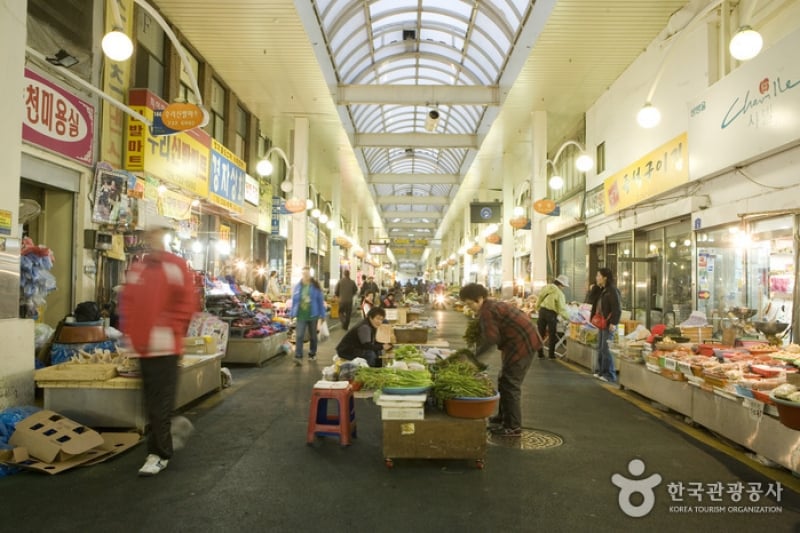
Image credit: Korea Tourism Organisation
Highlights include black pork skewers grilled over charcoal, sweet Jeju mandarins, Omegi rice cake, and the trendy octopus-and-cheese-filled bread. Expect queues for the pork skewers, but the wait is worth it!
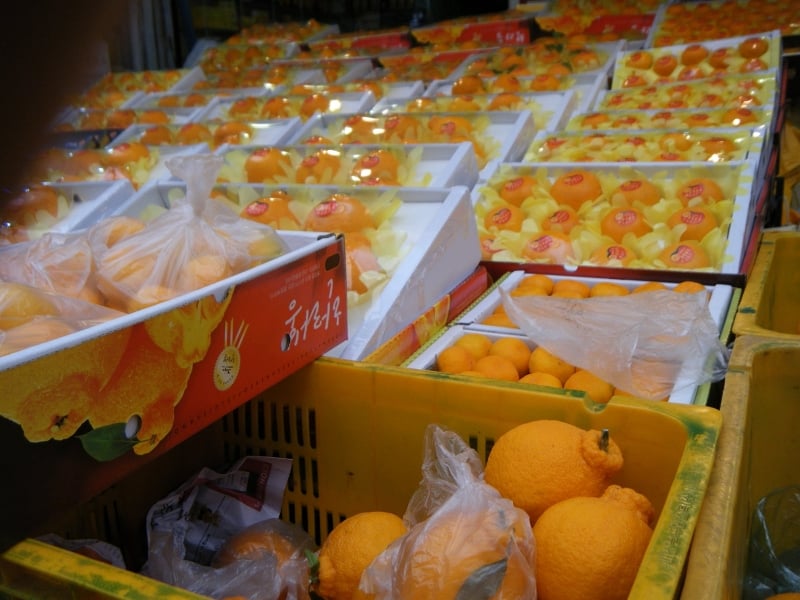
Image credit: garycycles
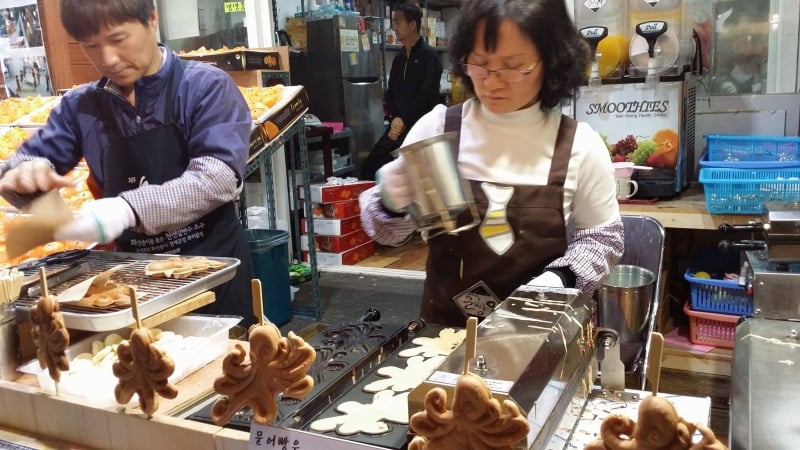
Image credit: Doldam Guesthouse, Jeju
Address: 22, Jungjeong-ro73beon-gil, Seogwipo-si, Jeju-do
How to get there: Take the airport limousine bus (600) from Jeju International Airport to Seogwipo, then take another bus from Seogwipo Intercity Bus Terminal to the market.
5. Seomun Market, Daegu
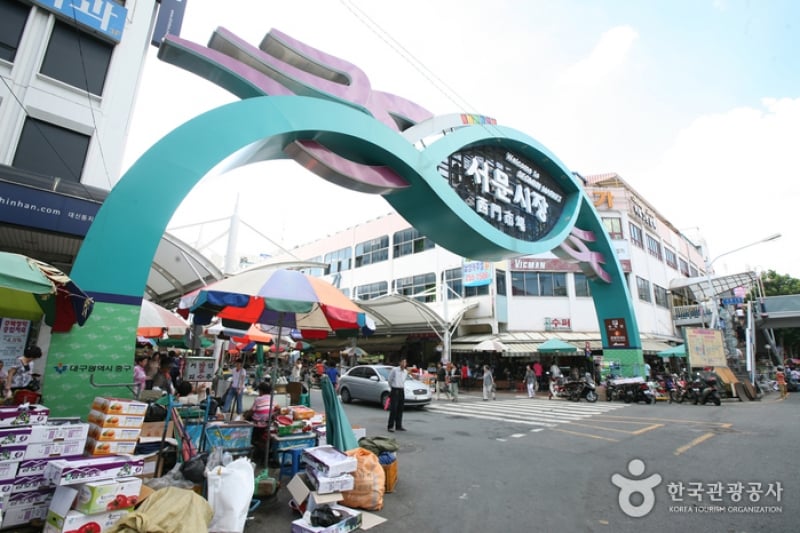
Image credit: Korea Tourism Organization
One of Korea’s three main markets during the Joseon Dynasty, Seomun Market remains a massive complex with food, textiles, and handicrafts. Its night market (open from 7pm) draws huge crowds with over 65 food stalls and lively entertainment.
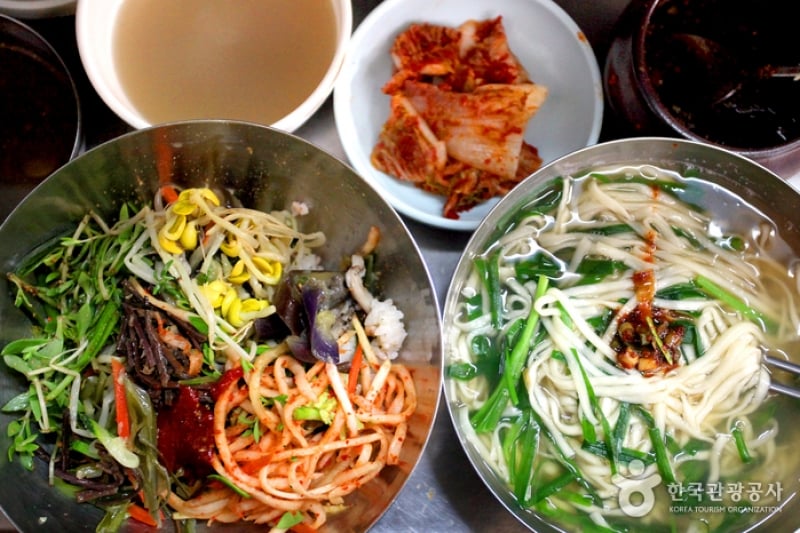
Image credit: Korea Tourism Organization
Must-try dishes include Kalguksu (knife-cut noodle soup in anchovy broth) and Nabjak Mandu (flat dumplings). Shoppers can also browse stalls selling hanbok fabric and textiles, perfect for souvenirs.
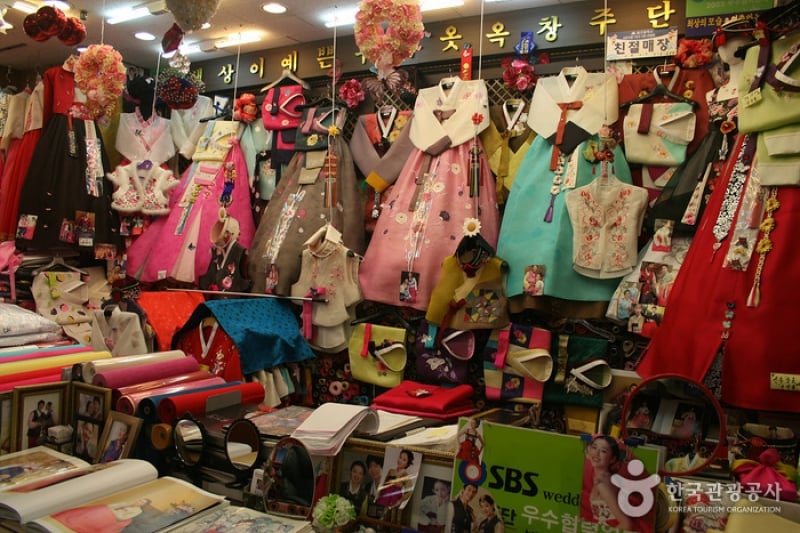
Image credit: Korea Tourism Organization
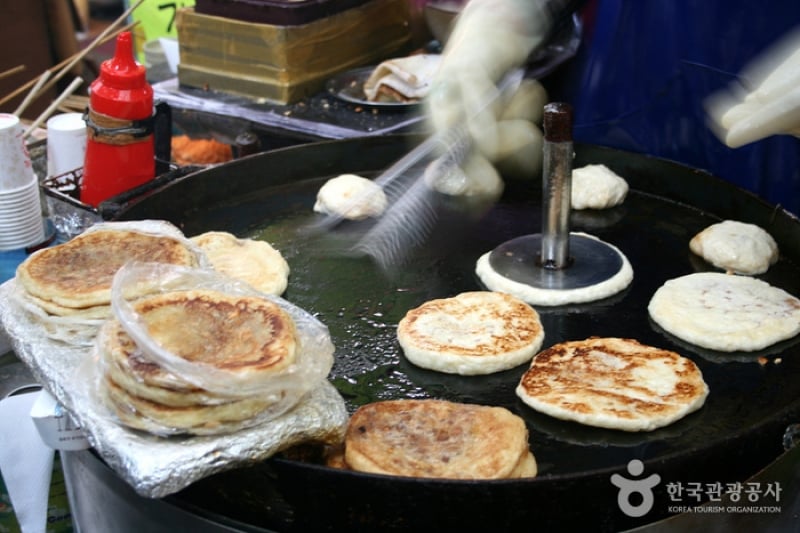
Image credit: Korea Tourism Organization
Address: 45, Keunjang-ro 26-gil, Jung-gu, Daegu
How to get there: Take the Daegu Subway Line 2 to Seomunsijang Station, exit at Exit 1 and walk there from the Dongsan Intersection.
6. Bupyeong Kkangtong Market, Busan
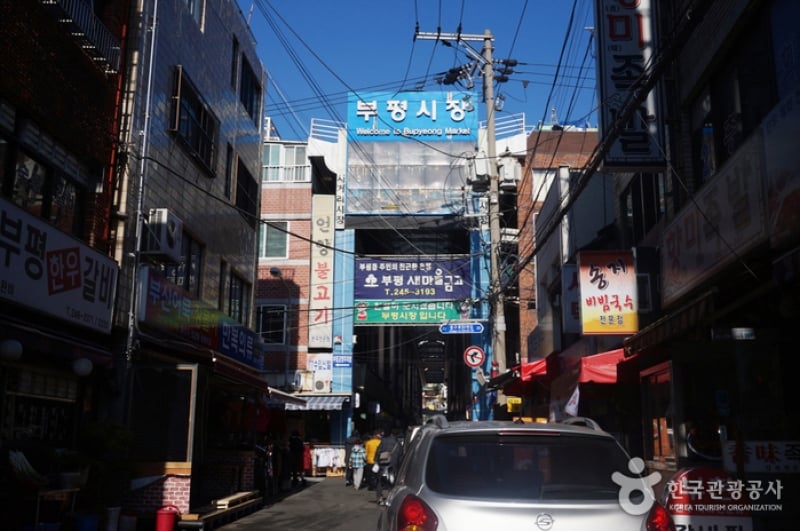
Image credit: Korea Tourism Organization
Nicknamed “Tin Can Market” for its history of selling imported canned goods to U.S. soldiers during the Korean War, Bupyeong Kkangtong Market has reinvented itself with a vibrant night market.
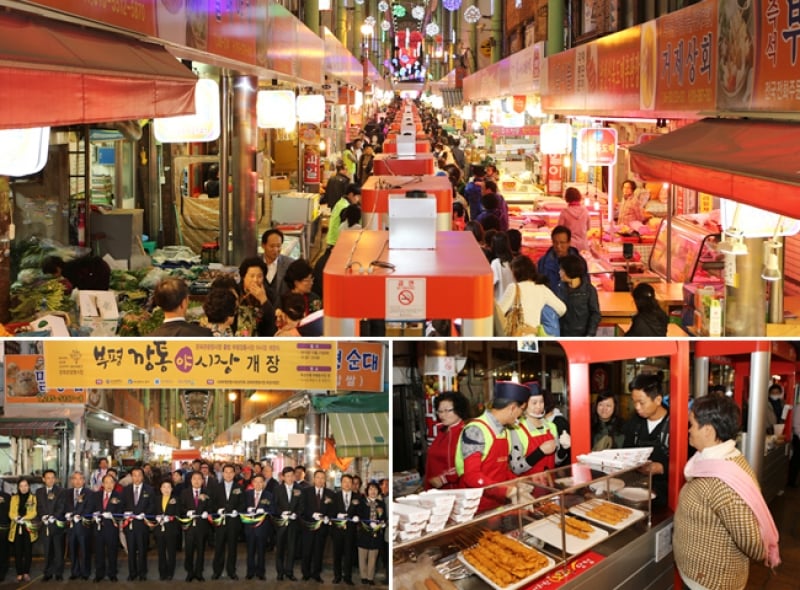
Image credit: Korea Tourism Organization
After 7pm, a lively night market opens at the public parking lots and at Arcade 2 of the market. More than two dozen mobile cooking stalls open along a 110-metre stretch, and you will be spoilt for choice when deciding what foods to try! If you’re there at the right time, you might be lucky enough to catch the magic show and guitar performance which take place twice a day at the intersection inside of the market.
Its reputation and potential as an “International” market still remain, with many stalls selling different types of food from all over the world. From Turkish Kebabs to Indonesian Mee Goreng, the night market could indeed even pass off as an international food fair!
Address: 48, Bupyeong 1-gil, Jung-gu, Busan
How to get there: Take the Busan Subway Line 1 to Jagalchi Station, and exit at Exit 7.
7. Gukje Market, Busan
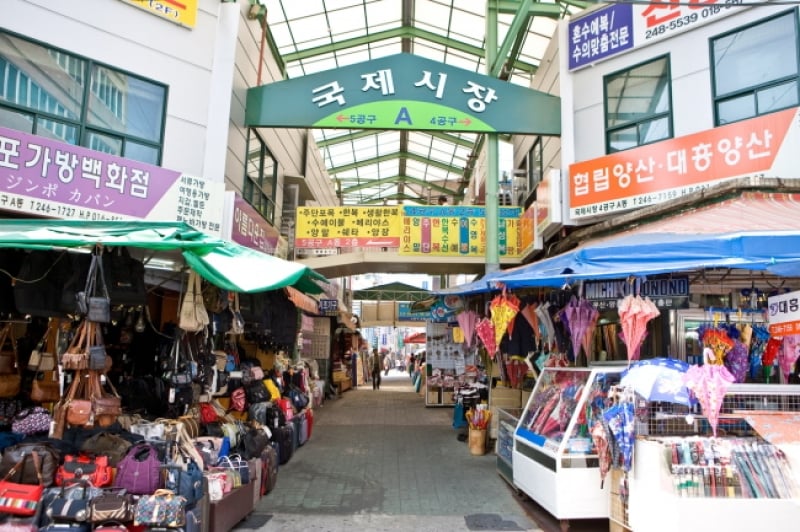
Image credit: Korea Tourism Organization
Located near the above-mentioned Bupyeong Market is another traditional market that is definitely worth a visit. The Gukje Market is one of Korea’s largest markets, and is comparable to the renowned Namdaemun Market in Seoul! Refugees who fled to Busan following the Korean War set up various stalls to earn a livelihood, and that paved the way for the modern-day Gukje Market.
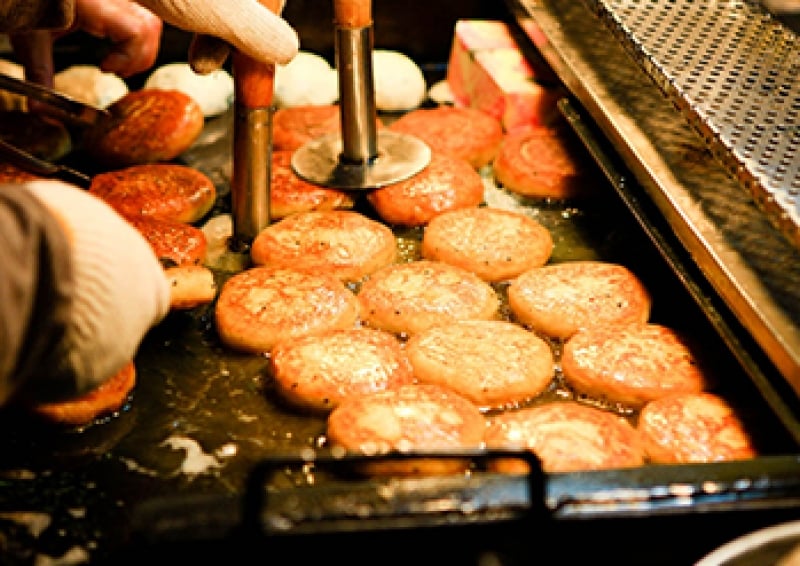
Image credit: Korea Tourism Organization
Containing about 690 stalls, the market sells a wide variety of products. Apart from food and clothes, you can also purchase kitchen appliances and electronics here. The must-try foods at this market include Yubu-Jeongol (fried tofu stew), Ssiat-Hotteok (sweet Korean pancake stuffed with seeds) and Bibim-dangmyeon (spicy glass noodles). Do note that the market is closed on the first and third Sundays of the month.
Address: Sinchang-dong 4-ga, Jung-gu, Busan
How to get there: Take the Busan Subway Line 1 to Jagalchi Station, and exit at Exit 7.
8. Danyang Gugyeong Market, Chungbuk
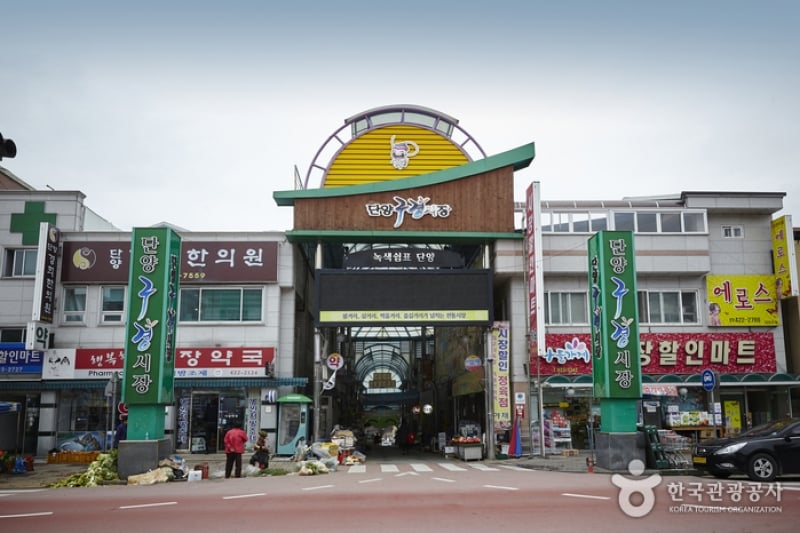
Image credit: Korea Tourism Organization
One word to describe Danyang? Garlic! This town in North Chungcheong Province is a famous producer of garlic. Many dishes and traditional medicinal treatments in Danyang are centred around the strong-smelling, pungent-tasting bulbous plant (which goes oh-so-well with savoury food!).
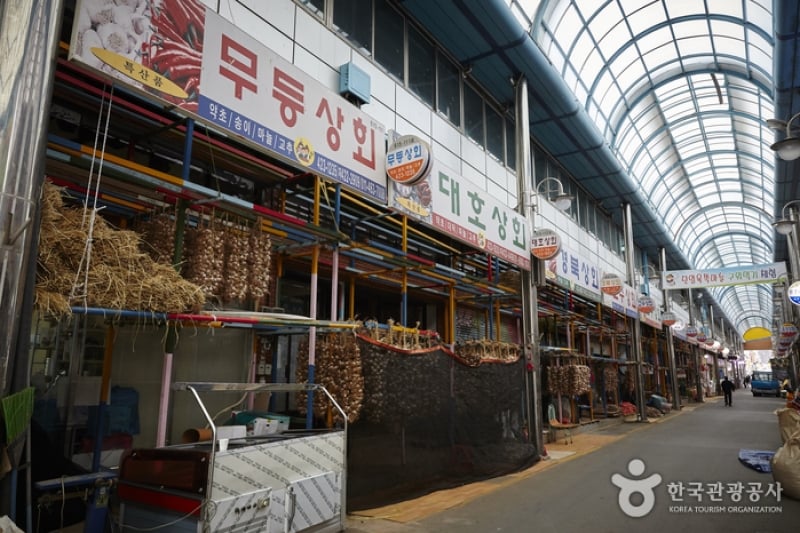
Image credit: Korea Tourism Organization
While you are at the Gugyeong Market, keep your eyes peeled for the O-seong Roasted Chicken. Be sure to also try the garlic shrimp dumplings which are sure to allure you with their strong distinctive smell of garlicky, seafood-y goodness!
Address: 31, Dojeon 5-gil, Danyang-eup, Danyang-gun, Chungcheongbuk-do 27011, South Korea
How to get there: Take a bus from Dong Seoul Bus Station to Danyang Intercity Bus Station.
Indeed, the term “traditional markets” often brings to mind two conflicting images. To some, it stirs images of a rustic, working-class market full of warmth, life and heart. To others, it conveys a stereotype of being unkempt and unhygienic. However, the various city councils do recognise the value of traditional markets and are stepping up to renovate and revitalise the marketplaces. Young, local entrepreneurs are also actively participating in the scene, injecting youthful vibes into the market atmosphere while maintaining its traditional charm.
We hope that you are ever more excited to visit these cultural, thriving hubs of activity – they offer a truly local experience nary found in the usual shopping malls or Korean barbecue joints.




